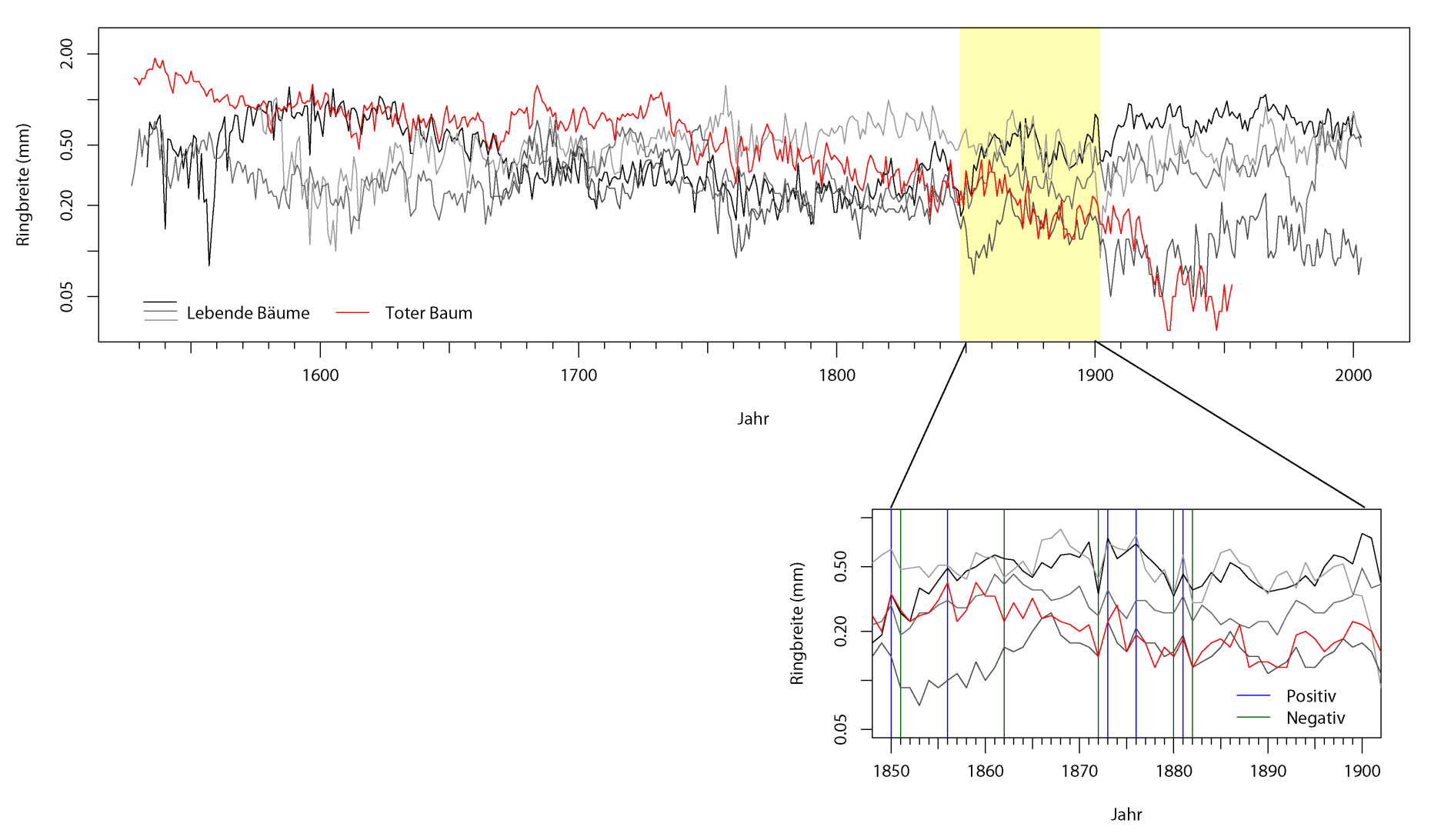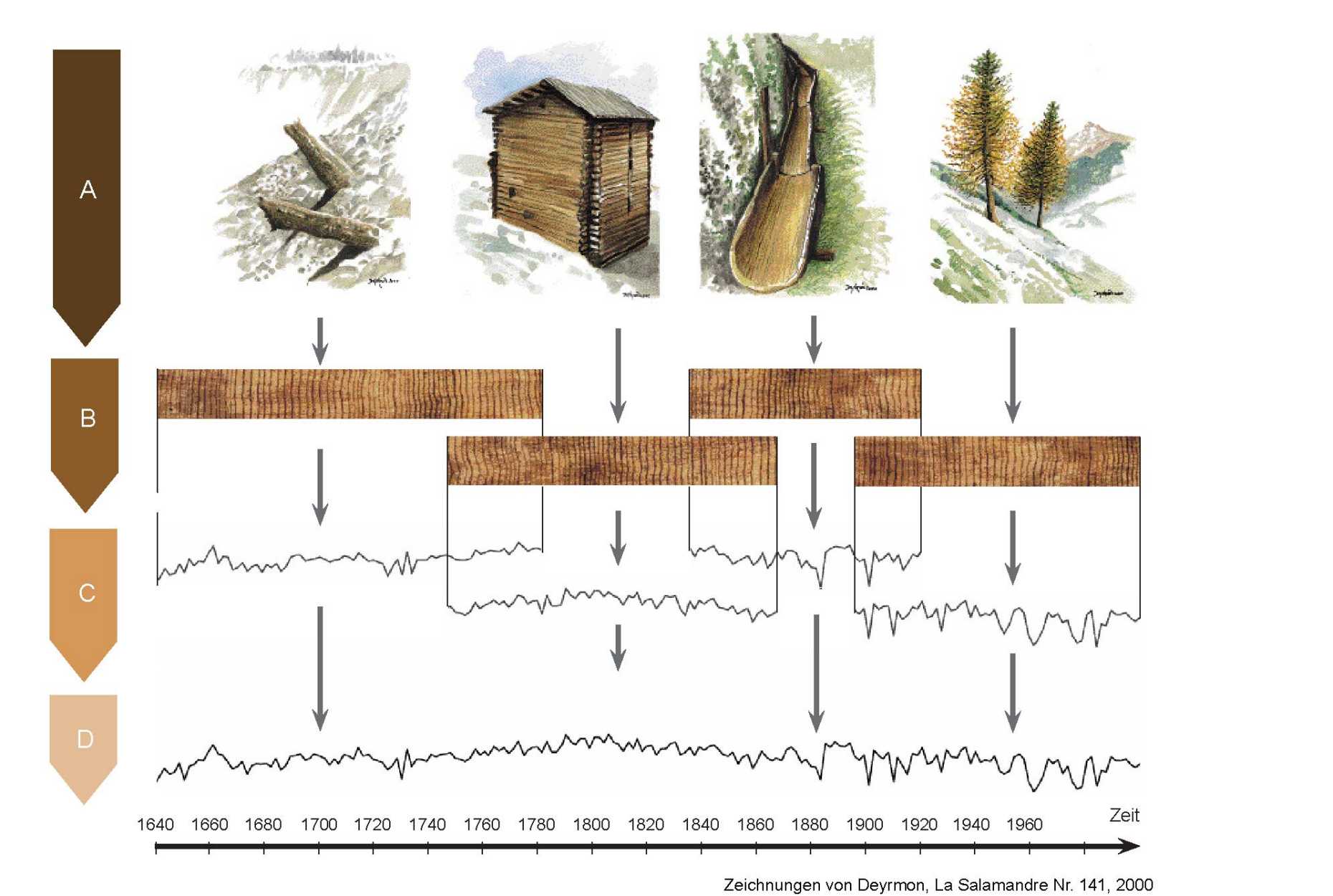Crossdating
Dendrochronology is ultimately based on cross-dating: Due to interannual climate variability, trees develop a characteristic sequence of wide and narrow annual growth rings. A synchronous growth pattern of several trees within the same region allows for an exact dating of wood. Cross-dating facilitates the establishment of a chronology, combing growth curves of various trees (Figure 1).

Figure 2. Synchronized annual growth curves of Spruce (Picea engelmannii) originating from northern Colorado (USA) and growing on elevations between 2930 and 3320 m. Living trees are indicated as black lines, the dead tree is indicated as red line, ring widths are displayed on a logarithmic scale. The upper part of the figure shows the entire growth curves, the lower part focuses on the period 1850 – 1900 with noticeable positive and negative years being marked in blue and green, respectively.

